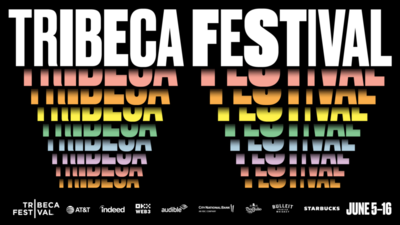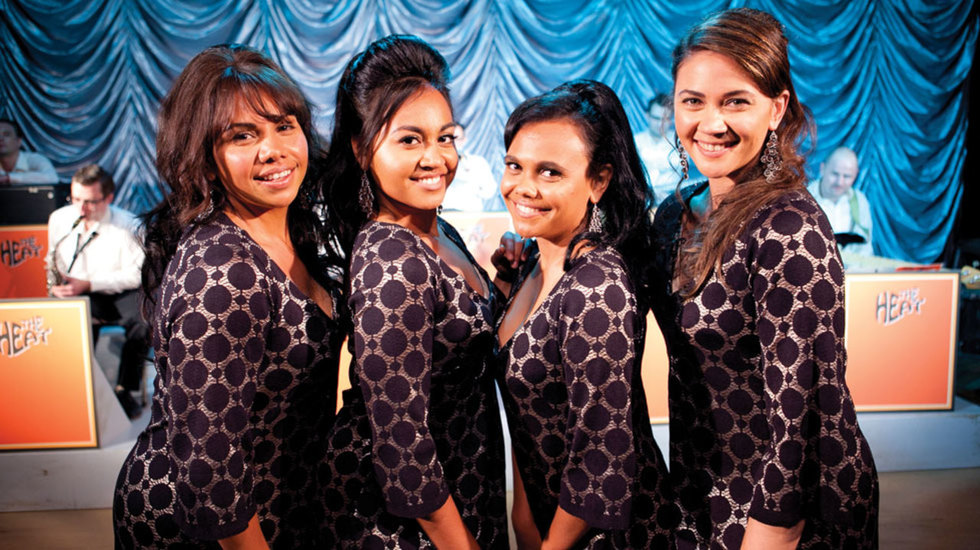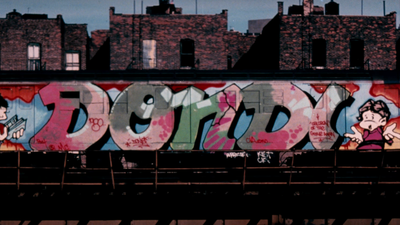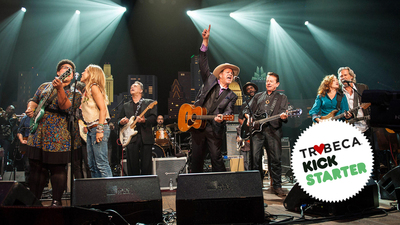
BY KAREN KEMMERLE |
Director Wayne Blair Brings Back 60’s Soul with ‘The Sapphires’
Out today in limited release, you’ll be tapping your toes to ‘The Sapphires,’ the Australian indie drama that tells the true-life tale of four Aboriginal singers who travel into the war zone of Vietnam to perform for the troops.

If you think that a small Australian musical drama shot in two different continents about four Aboriginal soul singers does not have a shot at being a worldwide hit, you would be wrong. Writer Tony Briggs adapted this remarkable film version of his popular Australian stage show that was inspired by his mother’s life.
Set in 1968, The Sapphires tells the story of four young Aboriginal women (Deborah Mailman, Jessica Mauboy, Shari Sebbens and Miranda Tapsell) who dream of performing for the masses. When they encounter Dave (a charming Chris O’Dowd), a fledging band manager at a musical event, he takes on the challenge of molding them into a swinging girl group that eventually is sent on a one-way trip to Vietnam to entertain the troops. Along the way, the girls encounter prejudice, adventure, love and tragedy, all set to the soundtrack of 60s soul classics.
Director Wayne Blair recently sat down with Tribeca to discuss his personal history with The Sapphires, his love of 60s soul music, and why you should never go on a press tour with four excitable young actresses.
Tribeca: It’s well-known that you appeared in the stage show that inspired the movie, The Sapphires. What was your initial reaction when you got the call from writer Tony Briggs asking you to direct the film?
Wayne Blair: I just thought, “Oh, that’s cool!” I had no real idea of the ramifications of being a feature filmmaker. At the time, I was involved with my own theatrical world Six months later, after reading the first draft of the script, I realized the full impact of what he was asking me to do. I knew that the film could be big and that it was just what the world needs, but it began as a promise from a friend to a friend.
Tribeca: While The Sapphires tells a complex story that takes place on two different continents, it is a very personal film. Tony Briggs incorporated many of his own experiences into the script. Did you bring your own experiences and those of your family to the film as well?
Wayne Blair: For sure, I relied on my experiences and those of my extended family in shaping events in the film. Living in Australia, we all understand the effects of the kind of racism that these girls encountered and we all know just where average people sit in the political landscape. Australia is a territory that we cover a lot, so that sort of came easy.
Tribeca: Mainstream American audiences rarely are exposed to the Aboriginal people’s struggle for equality. Were you conscious of a need to recognize their fight for human dignity while you were making this film?
Wayne Blair: To a certain extent. Our initial goal was reaching local audiences, and the film did very well in Australia. But we always had the idea that we wanted the film to speak to world audiences, especially America. Once Bobby and Harvey Weinstein picked it up, we knew we had a chance to reach the American market.
For instance, it has been widely played at festivals in America where it has won 7 Audience Awards, which is unheard of, or so people tell me. So look, I think for an independent film in Australia, it has made some good airwaves.
 Courtesy of The Weinstein Company
Courtesy of The Weinstein Company
Tribeca: One key ingredient to the film’s success was the casting of the four girls: renowned Aussie actress Deborah Mailman; newcomers Shari Sebbens and Miranda Tapsell; and, of course, Australian Idol’s Jessica Mauboy. How did they come to the project?
Wayne Blair: It was a great process. We wanted four girls with the same energy that we had. Tony’s mom, one of the original Sapphires, traveled to New York with us. She’s in her late sixties now, but she was 18 or 19 when she said “yep, I’m going to Vietnam.” We needed four girls who, when presented with this challenge, could believably say, “somebody just try and stop me.”
The girls became is a little family unit, and looked after each other. They’re beautiful, and they’re just crazy girls. You know, I sit in the car traveling with them to a screening and they do my head in sometimes. They just talk and play music loud and it’s sort of like “can’t you girls turn the volume down for 5 minutes?” [laughs] But no, they’re great.
Tribeca: I’m a big fan of Chris O’Dowd, but I had never seen him in this type of role. It was very different from Roy, the character he played in The IT Crowd and from the roles he is well-known for in American movies. What was your collaborative process like?
Wayne Blair: I got him out of LA when Bridesmaids had just opened. We couldn’t find the right person for the role, and so I flew to LA to meet with talent agents. I explained the character, the agent said, “I know just the guy.”
It wasn’t like Brad Pitt, Tom Hanks or Hugh Jackman, it was Chris O’Dowd. I watched the trailer that had just come out, and he was only in it for about 15 seconds (although it was a good 15 seconds), but I needed to see more. I saw Bridesmaids that afternoon and I was on the phone straightaway with the producers back in Australia. I knew that his energy would be great for us. He was the last person hired for this film, and it was the best last minute decision I ever made.
 Courtesy of The Weinstein Company
Courtesy of The Weinstein Company
Tribeca: One of the major themes in the film is the transformative power of music. Nowhere is this more apparent than in the scene in which Dave sings “I’ll Take You There” with the girls to show them how to put the “soul” in soul music. Can you talk about the filming of that sequence?
Wayne Blair: You know, it’s funny – that was the only day that the real Sapphires came to set. I think they were bored a little bit because we were in the middle of a basement. I am glad that they stayed because when we finally shot the scene, it just worked beautifully. Chris was great and the girls were great. What we did was absolutely perfect.
Tribeca: The Sapphires’ numbers were really fun to watch and seemed very authentic to the time period. Did you take your inspiration from any girl group in particular, or were these the actual numbers that the real-life women performed?
Wayne Blair: Both. The real Sapphires provided some inspiration, but we really looked at what big girl groups did in those times. We watched the Jamie Foxx film Ray, which was a big inspiration, and Angela Bassett’s performance in What’s Love Got to Do With It? was especially helpful.
Tribeca: How many musical numbers did you shoot in total?
Wayne Blair: Well, “The Young Girls”, that’s one. Others were “What a Man”, “Who’s Loving You?”, “Yellow Bird”, “Today I Start Loving You Again”, “Land of a Thousand Dances”, “Grapevine”, “People Make the World a Better Place”, “Sugar Pie Honey Bunch”, “If You Need Me”, “These Arms of Mine.” We filmed about 11 or 12 in all.
Tribeca: How did you and cinematographer Warwick Thornton work together to establish the look of the film?
Wayne Blair: Warwick put in a great deal of work in pre-production, longer than he normally would as a cinematographer. We got to meet quite early and talked about the film and how we’re going to shoot. We didn’t have much time to shoot, so preparation and planning was vital.
And we looked at, as I said, Ray, but we also looked at the way other films like Mississippi Burning, used colors. Spielberg’s The Color Purple was helpful. The colors were really not hot, but the reds and oranges and greens had texture. The story that film tells is dark and dismal and sad, but the way they shot it is just beautiful.
 Courtesy of The Weinstein Company
Courtesy of The Weinstein Company
Tribeca: So many wonderful songs are featured in the film. Is there any song from the golden age of 60s soul that you wanted to use, but couldn’t?
Wayne Blair: Yeah, it was “Cloud Nine” by the Temptations. It’s about heroin and we had no heroin use in our film [laughs].
Tribeca: Have the original Sapphires’ seen the film? What were their reactions?
Wayne Blair: At first, they couldn’t figure out why anyone would want to see a movie about them! They’re just so humble. We told them we were happy with it, and they said, “we love it, but will people see it? Will they get our story?” Once they saw audience reaction at the Melbourne Film Festival where it received a standing ovation, any fears they had were gone.
Tribeca: The Sapphires is your first feature length film, a challenge in and of itself. You took on the additional challenge of a period piece musical about a group of Aboriginal singers who go to Vietnam to perform for the troops. Is there any particular lesson that you would like to pass on to aspiring directors?
Wayne Blair: Just trust your instinct. Try to trust your instinct more than anything and jump in the deep end. That’s what I did, and now here I am, talking to you.
The Sapphires opens in limited release this weekend. Click here to search for tickets in your neighborhood.

